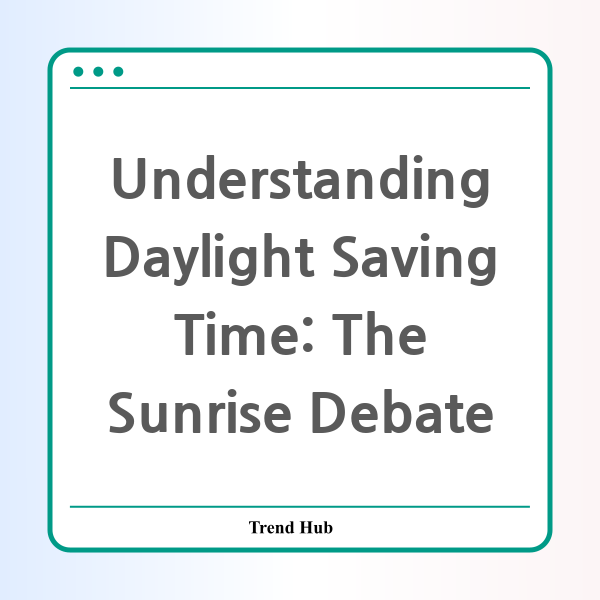* This website participates in the Amazon Affiliate Program and earns from qualifying purchases.

Are you prepared to lose that precious hour of sleep? As spring approaches, millions of Americans will soon face the biannual ritual of changing their clocks, commonly known as daylight saving time. This year, daylight saving time begins on Sunday, March 9, 2025, when clocks will spring forward one hour at 2 a.m. While the change signals the arrival of longer days and warmer weather, it also brings about a host of questions and concerns regarding its necessity and impact on our lives.
Daylight saving time (DST) has been a tradition in the U.S. for over 50 years, but it remains a topic ripe for debate. Many dread the time shift, as it disrupts sleep patterns and leads to a spike in sleep-related issues. But is it time to reconsider this practice altogether?
The Sunshine Protection Act, first introduced by Florida lawmakers in 2018, aims to abolish the clock change entirely by making daylight saving time permanent. Despite several attempts to push this bill through Congress, it has yet to become law. In 2022, the act passed unanimously in the Senate but failed to garner sufficient support in the House of Representatives, indicating a complex struggle to change the status quo.
Advocates for the elimination of DST argue that the inconvenience and confusion caused by switching clocks outweigh the purported benefits. Health experts, including those from the American Medical Association and the American Academy of Sleep Medicine, advocate for maintaining standard time year-round, as it aligns better with our biological rhythms and sunlight patterns. Interestingly, studies have shown that the perceived benefits of DST—such as reduced energy consumption, lower traffic accident rates, and decreased crime rates—are statistically insignificant.
The origins of daylight saving time trace back to World War I when it was implemented as a means to conserve energy. Over the decades, various experiments have been conducted, including a year-round DST during the 1970s energy crisis. However, the long-term effectiveness of these initiatives remains debatable.
One must ask, when do we expect the next big change in how we observe time? Currently, Congress holds the power to alter daylight saving time, and with 45 states proposing legislation to either eliminate or modify its observance, it’s clear that the American public is divided over the issue.
In conclusion, whether you are a fan of the extra evening sunlight or someone who finds the clock change more of a nuisance than a benefit, it’s evident that the topic of daylight saving time is far from settled. As we prepare to adjust our clocks, it’s essential to consider the broader implications of this tradition and advocate for what aligns best with our health and lifestyles.
Will this be the last time we spring forward? Only time will tell.
* This website participates in the Amazon Affiliate Program and earns from qualifying purchases.